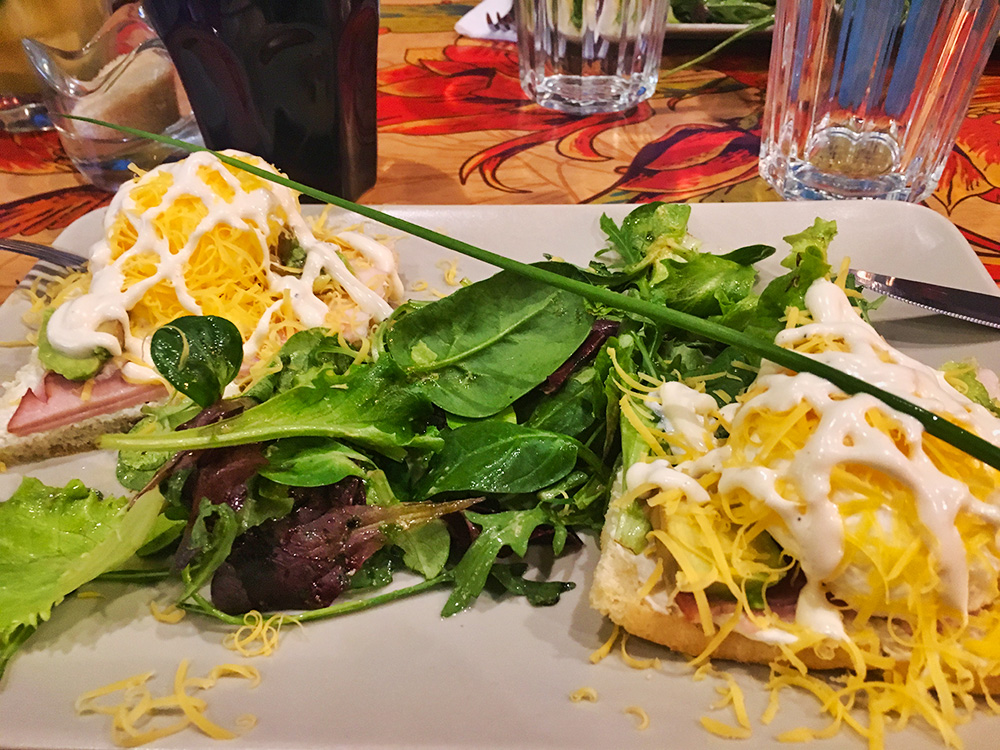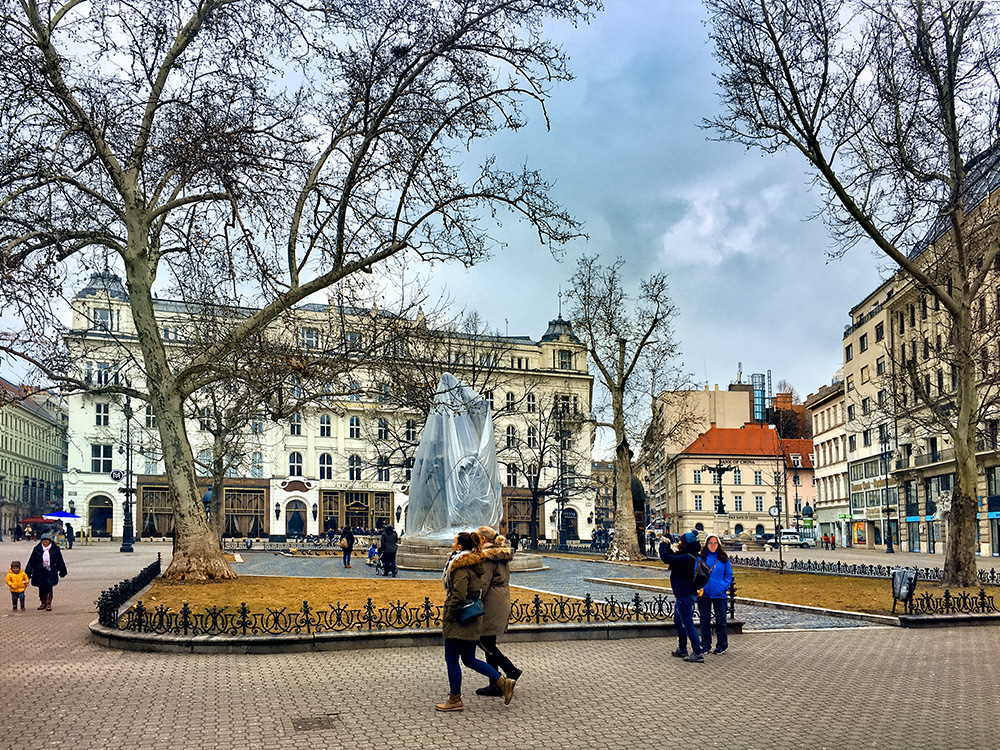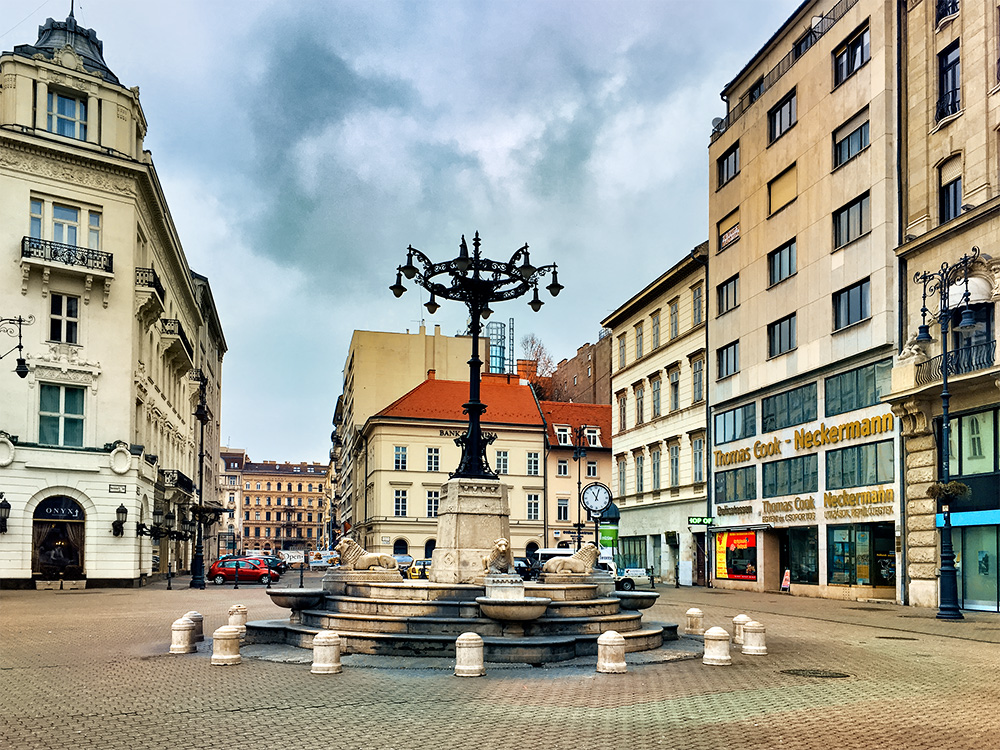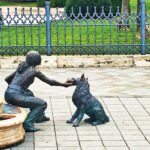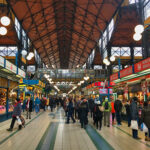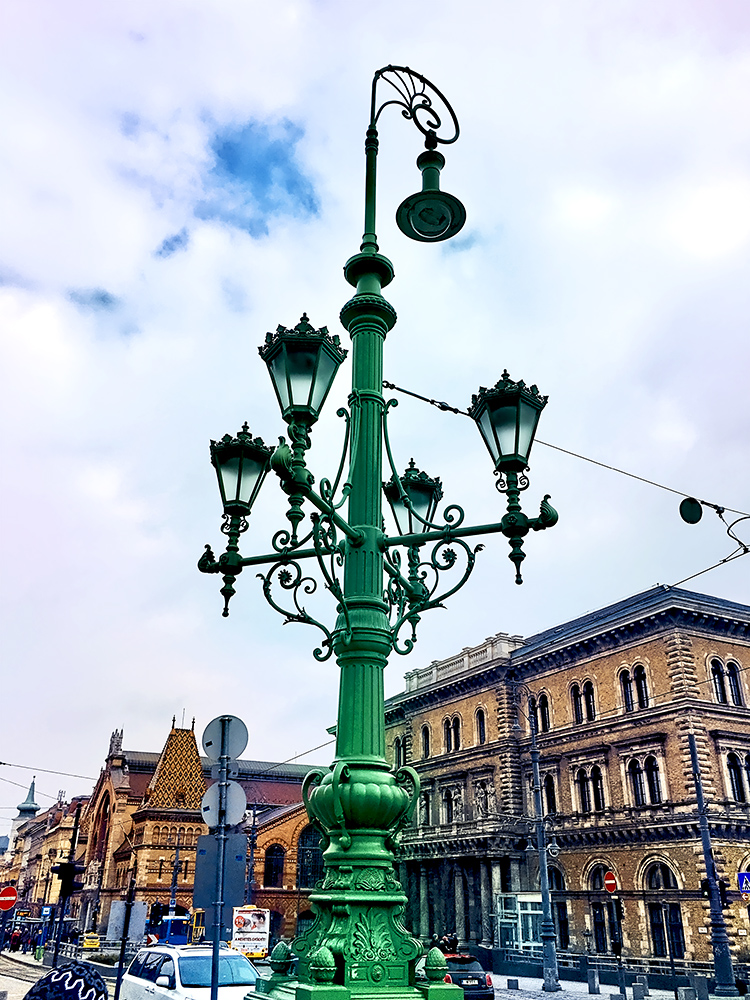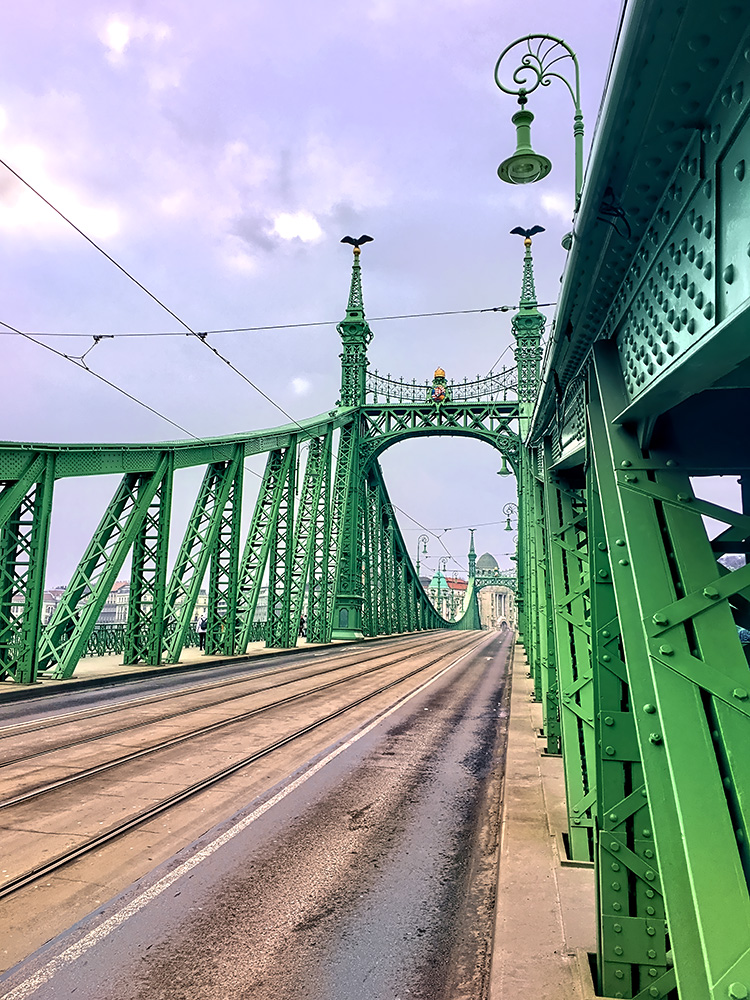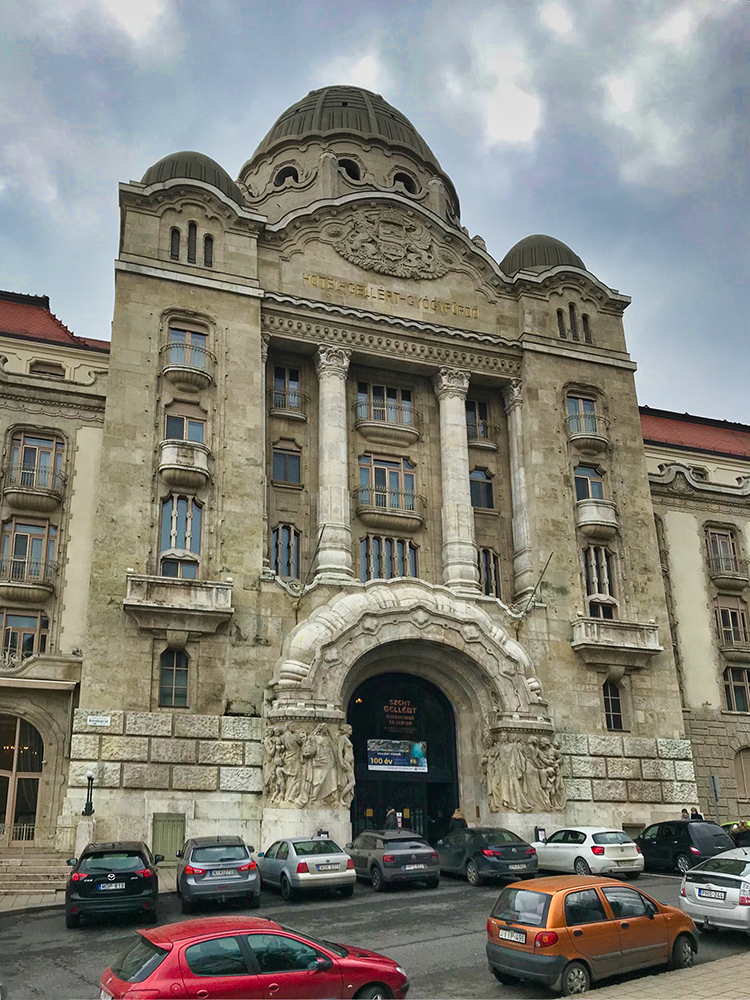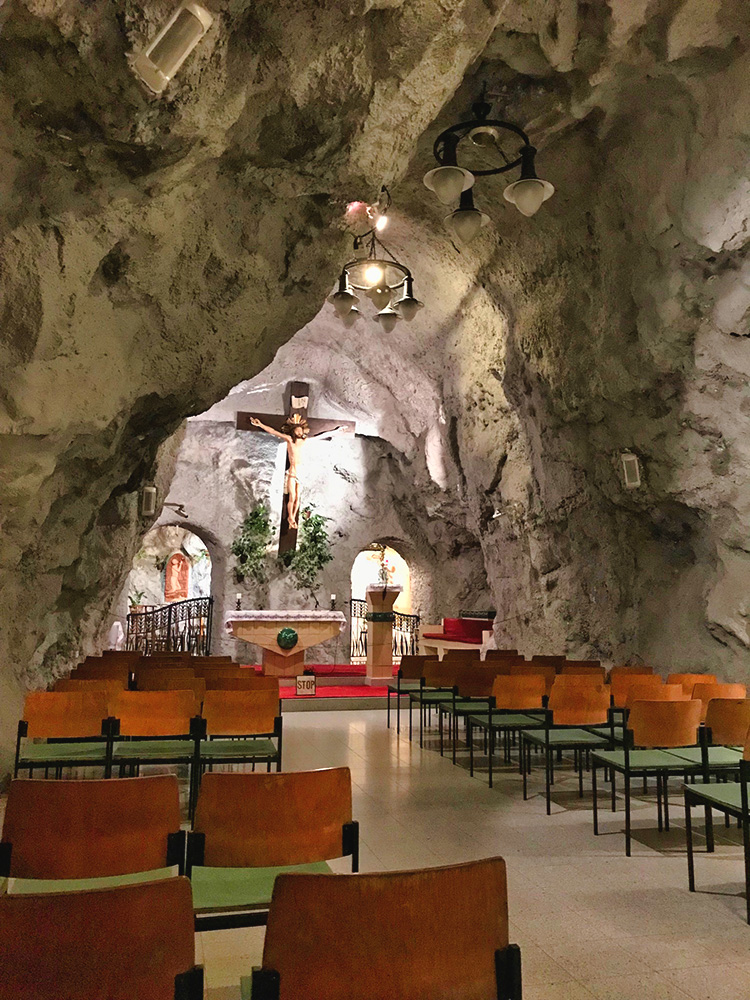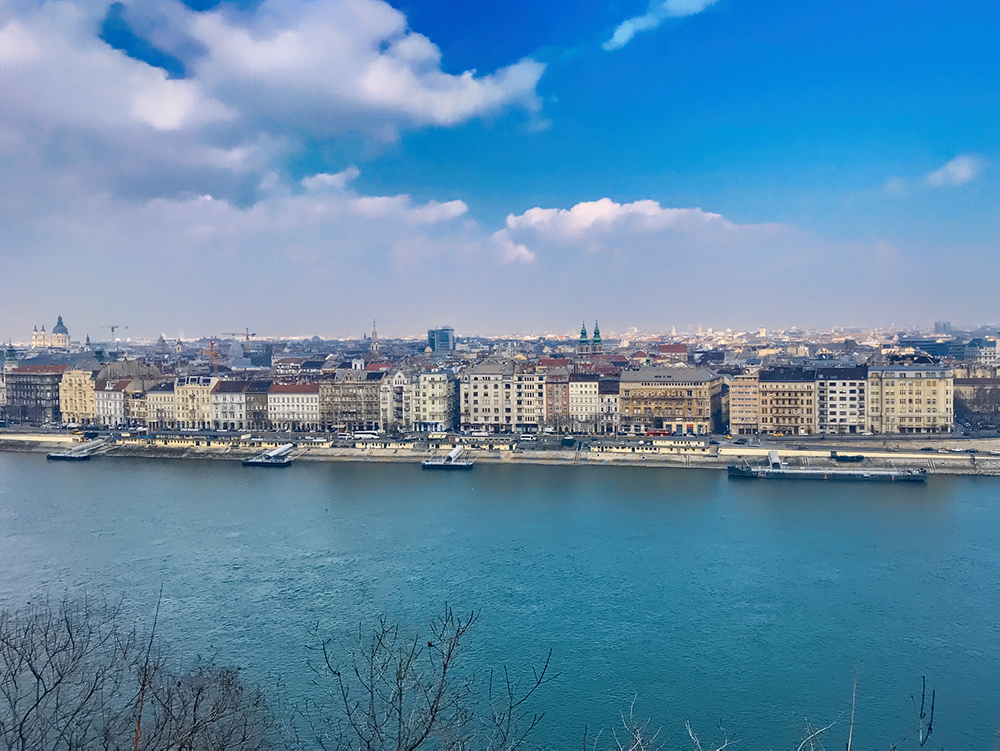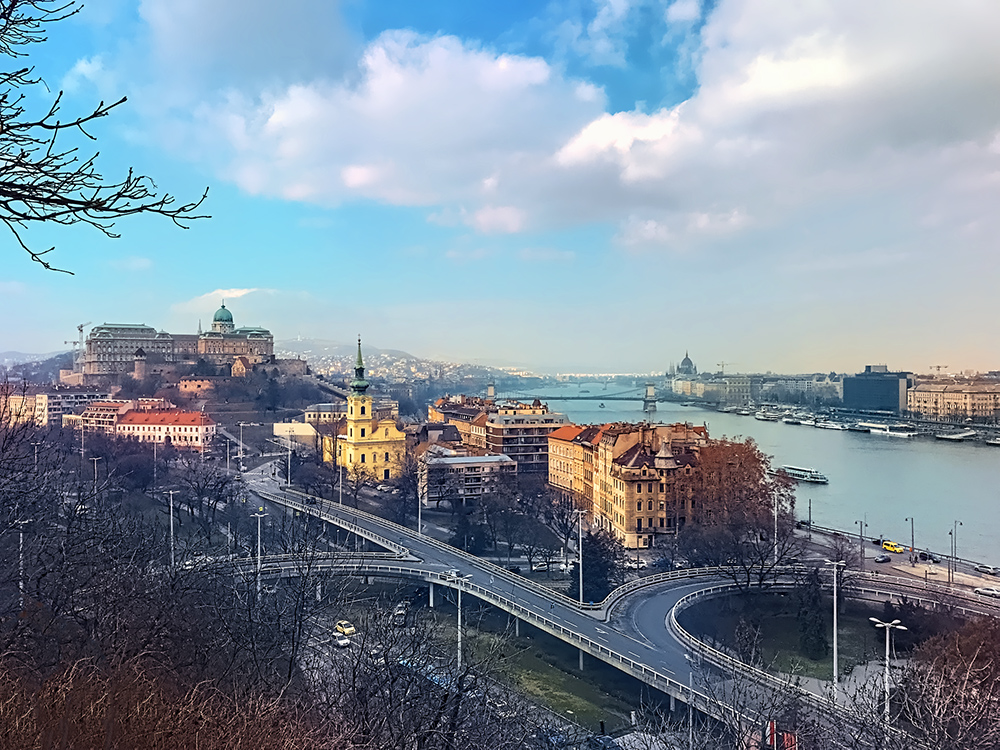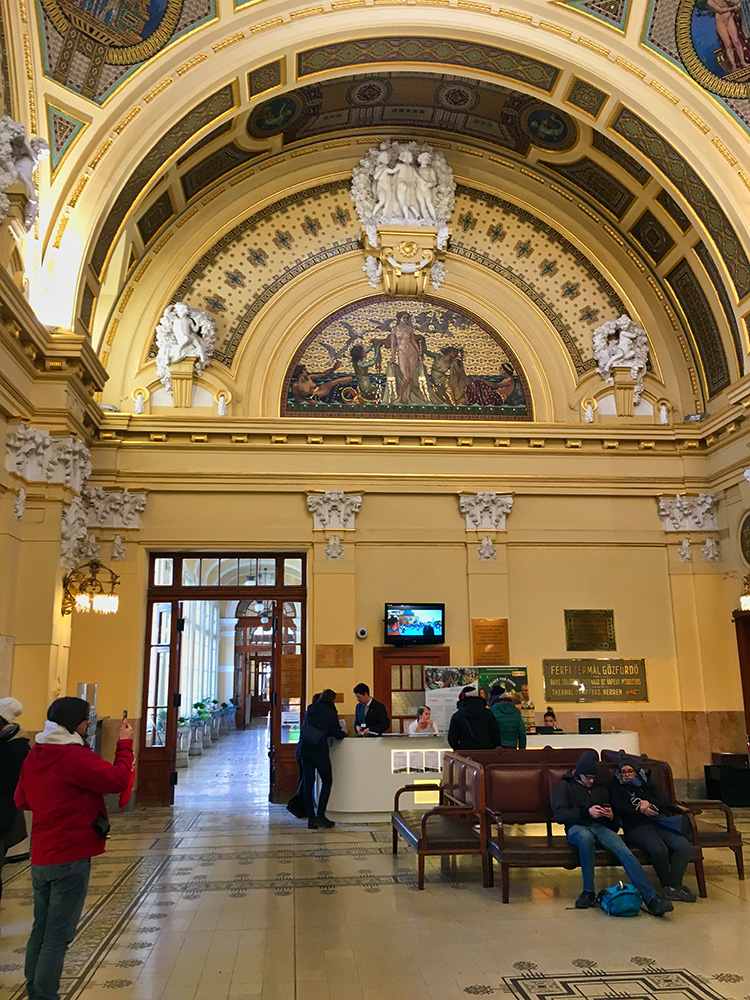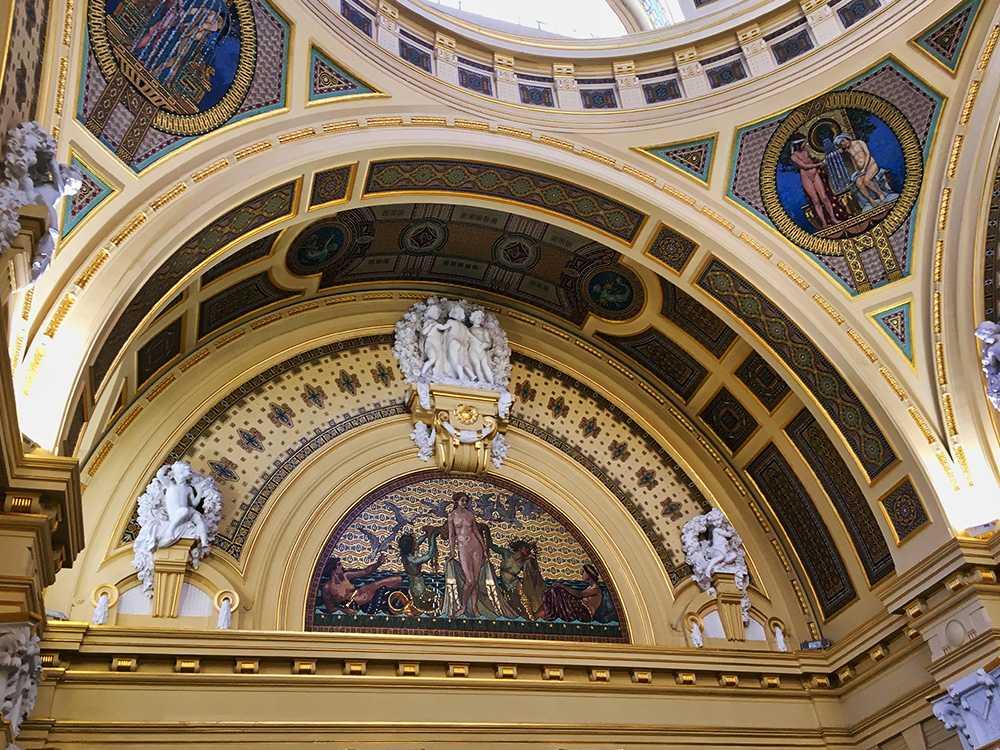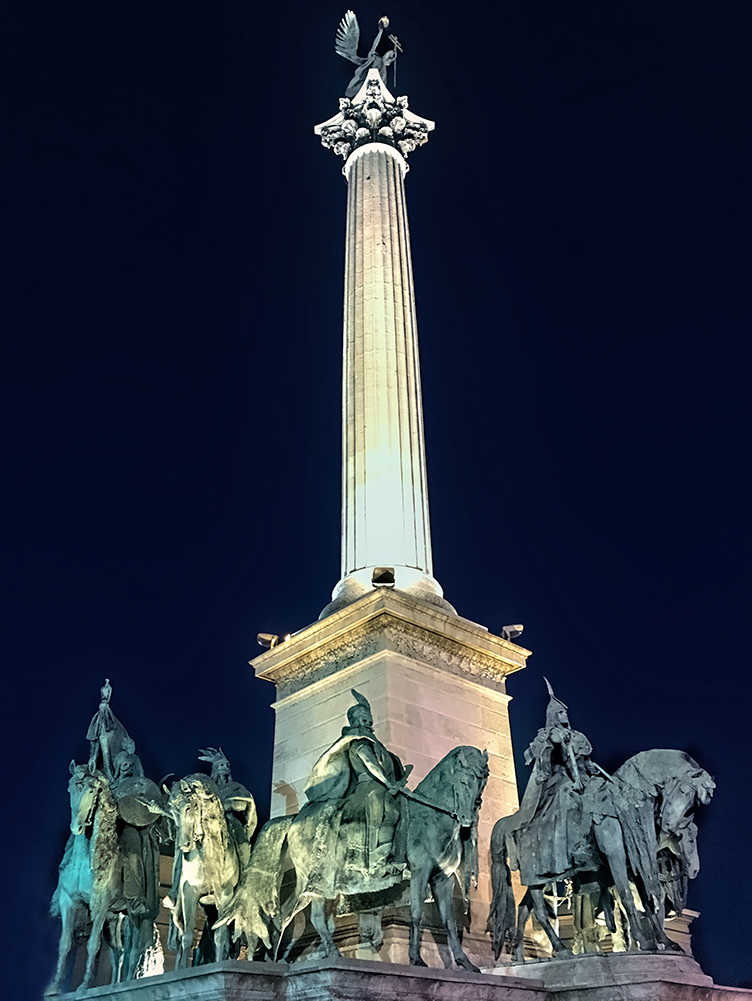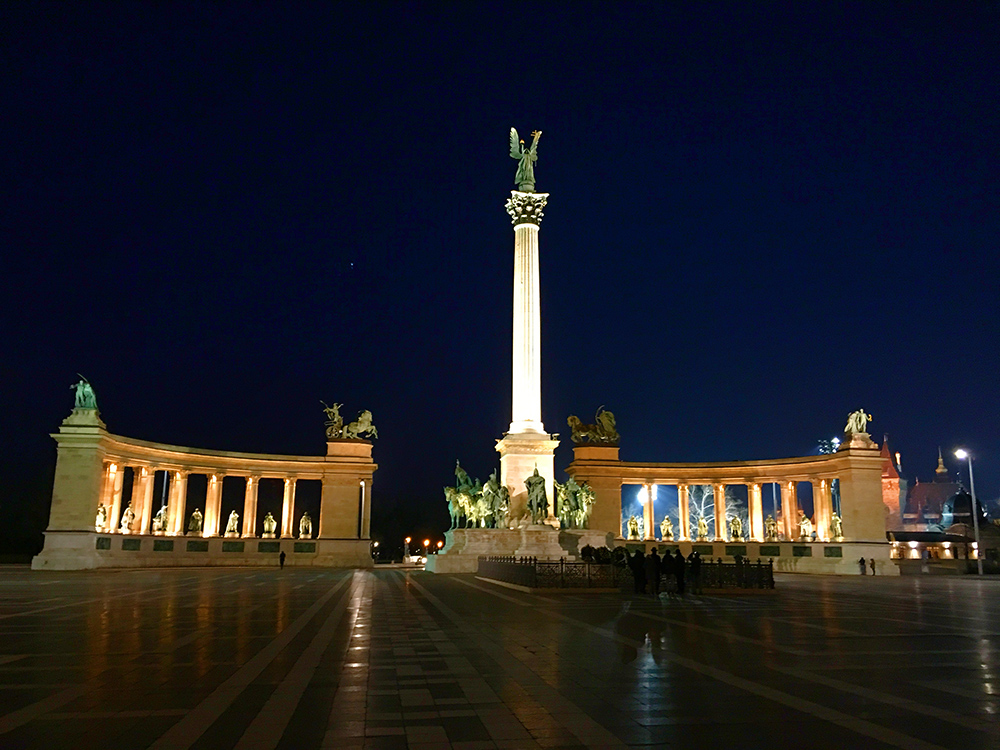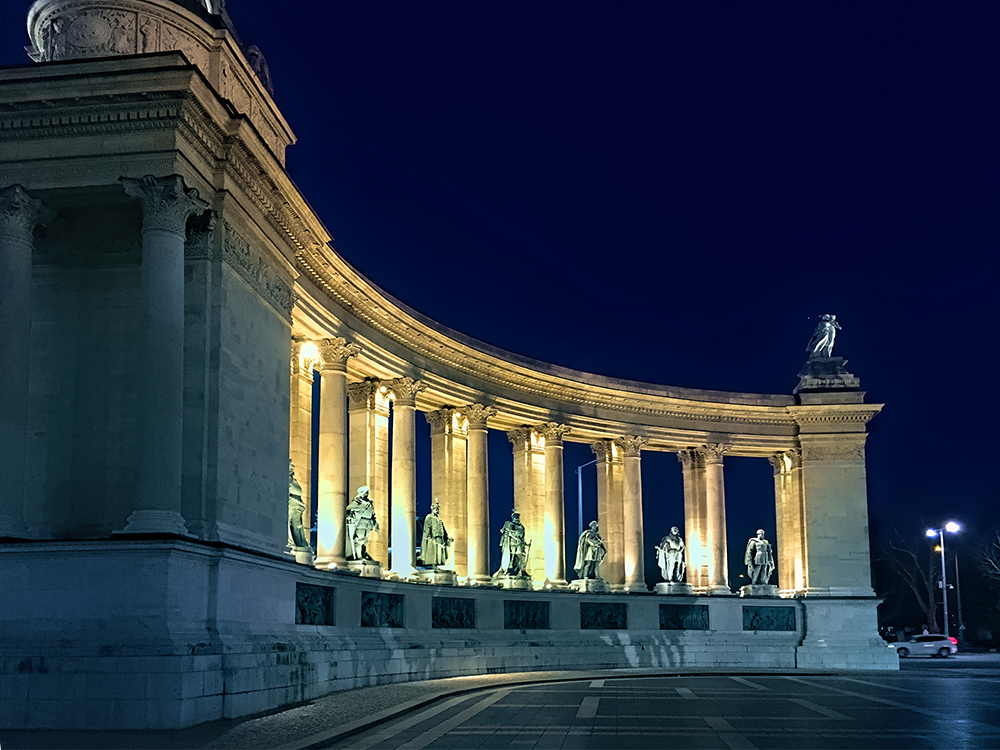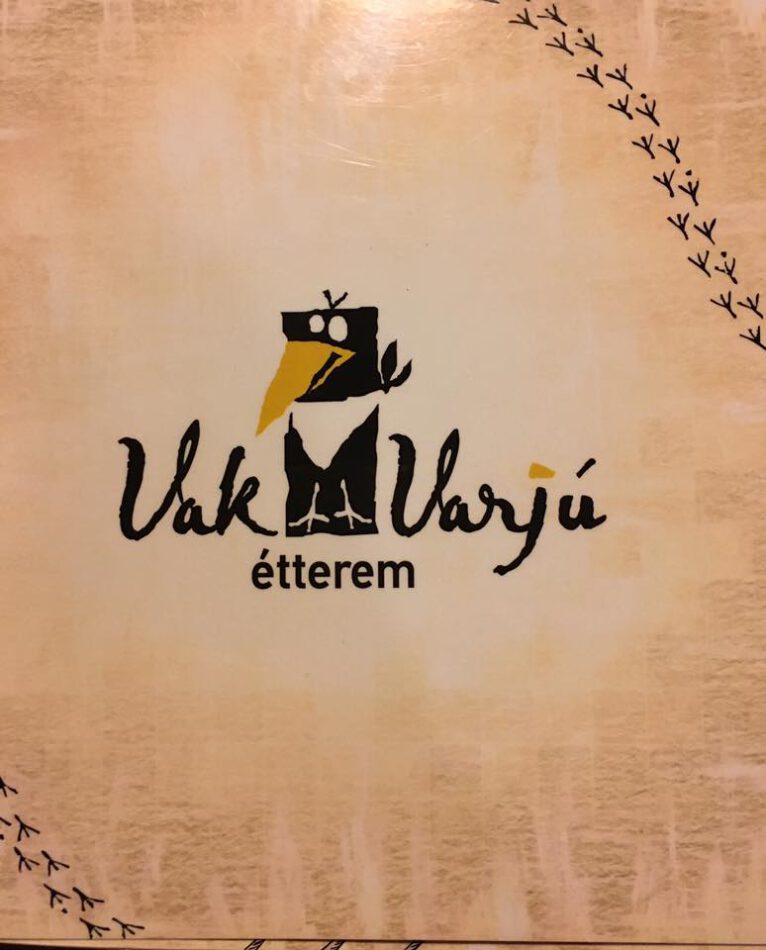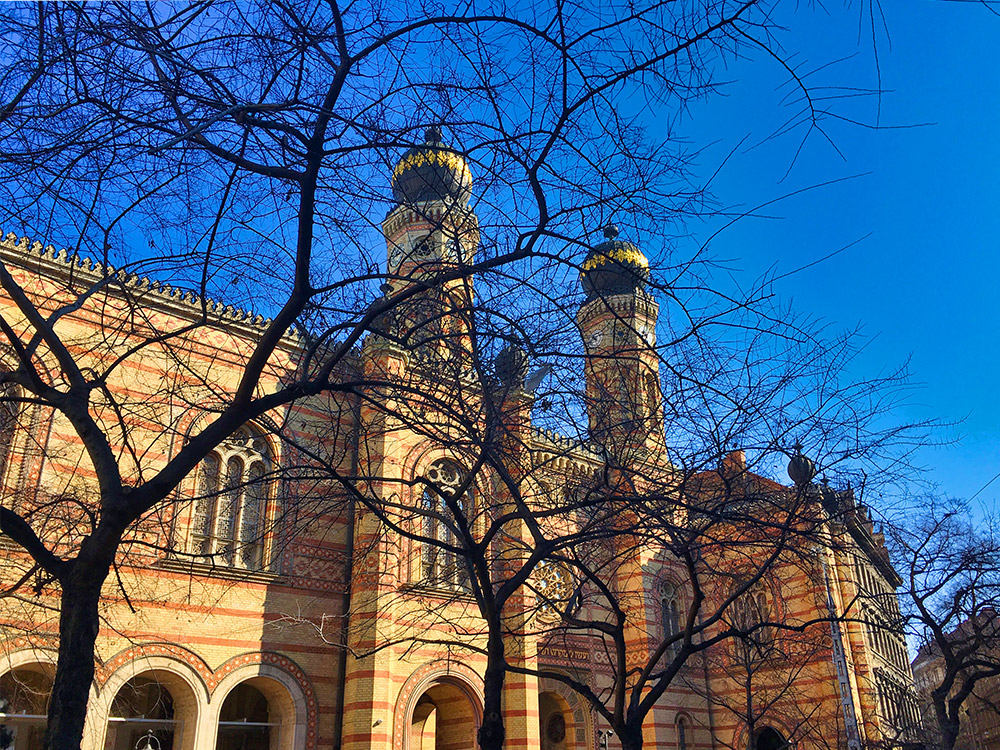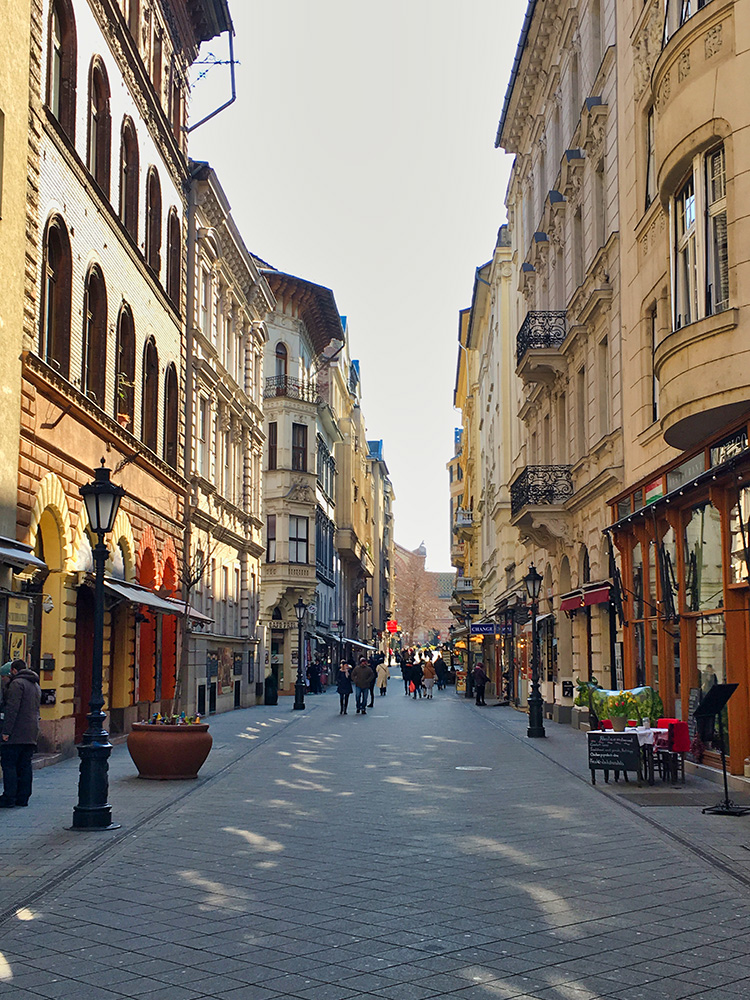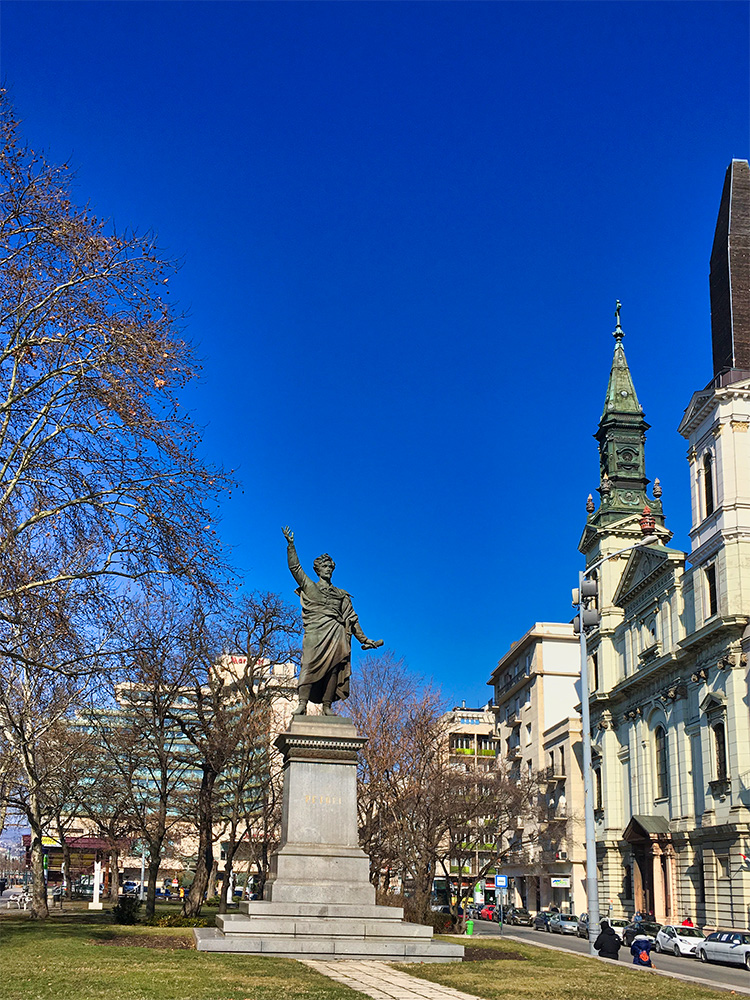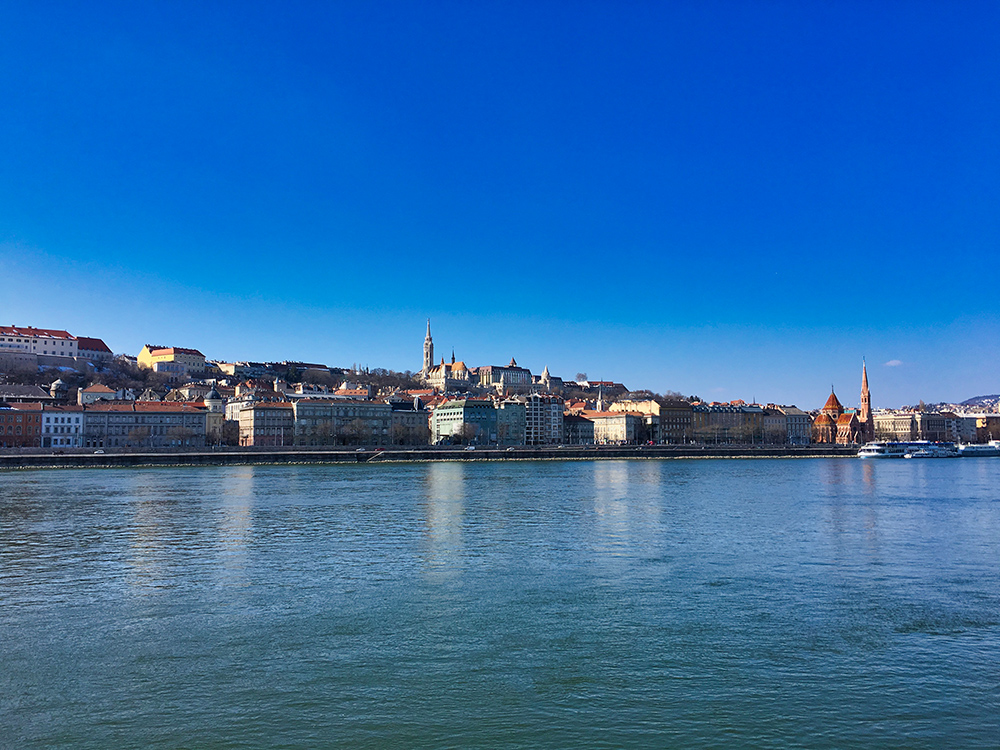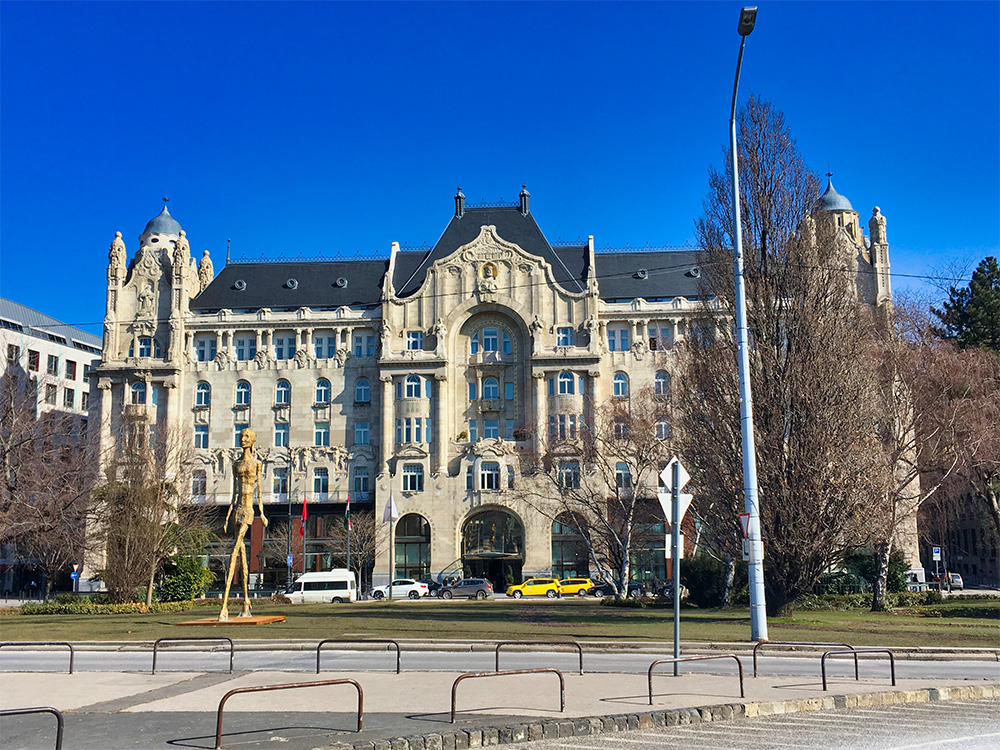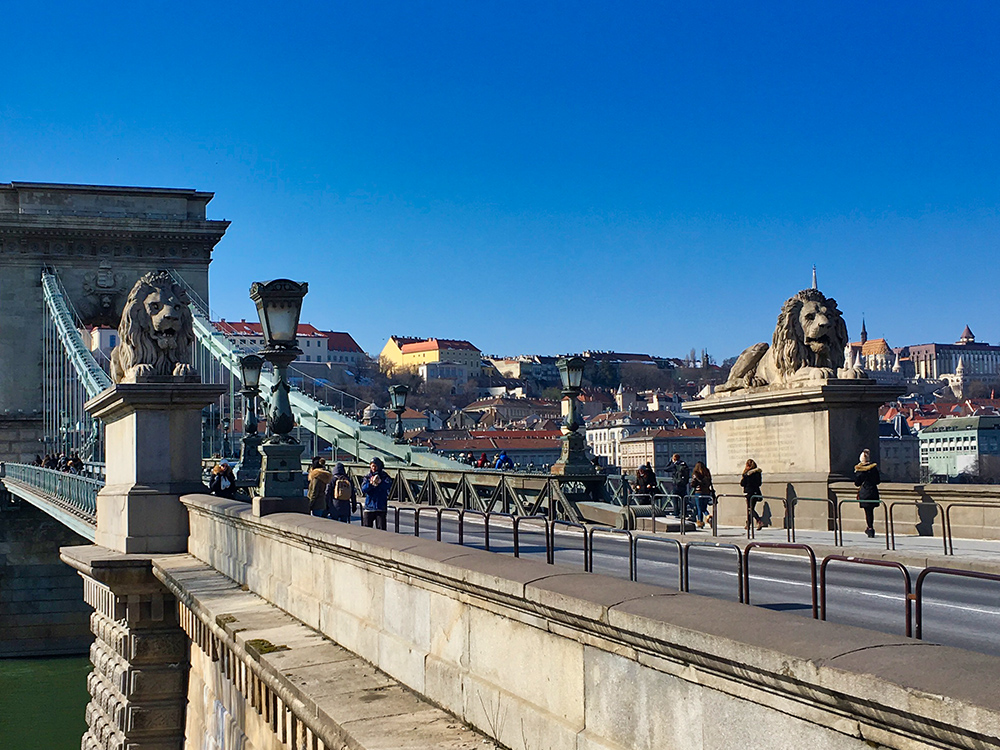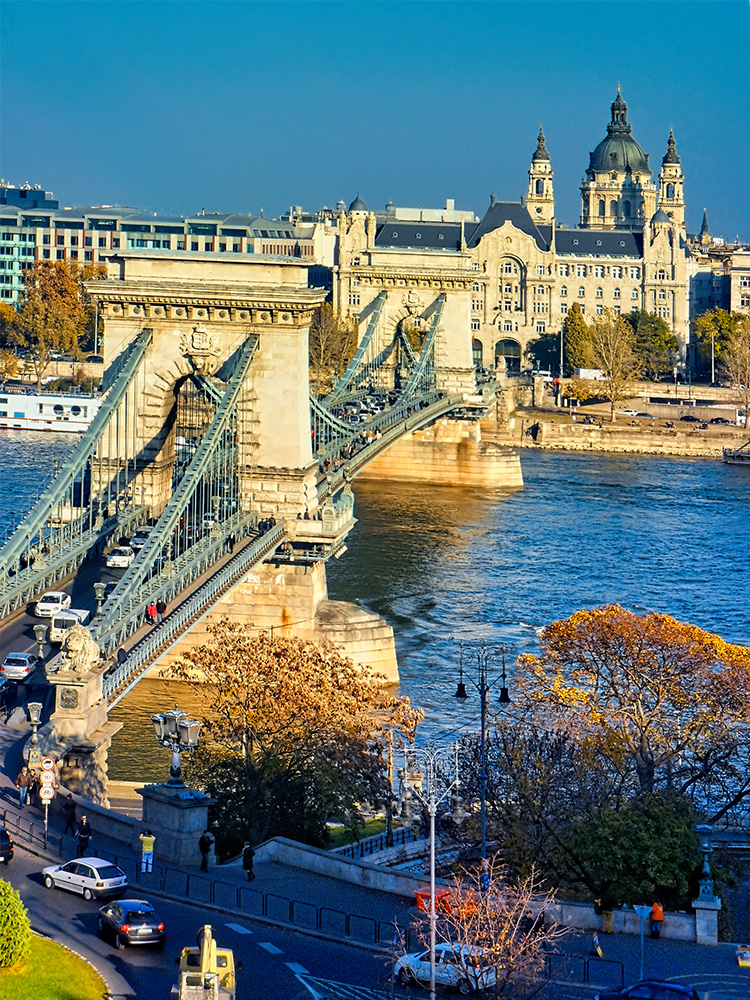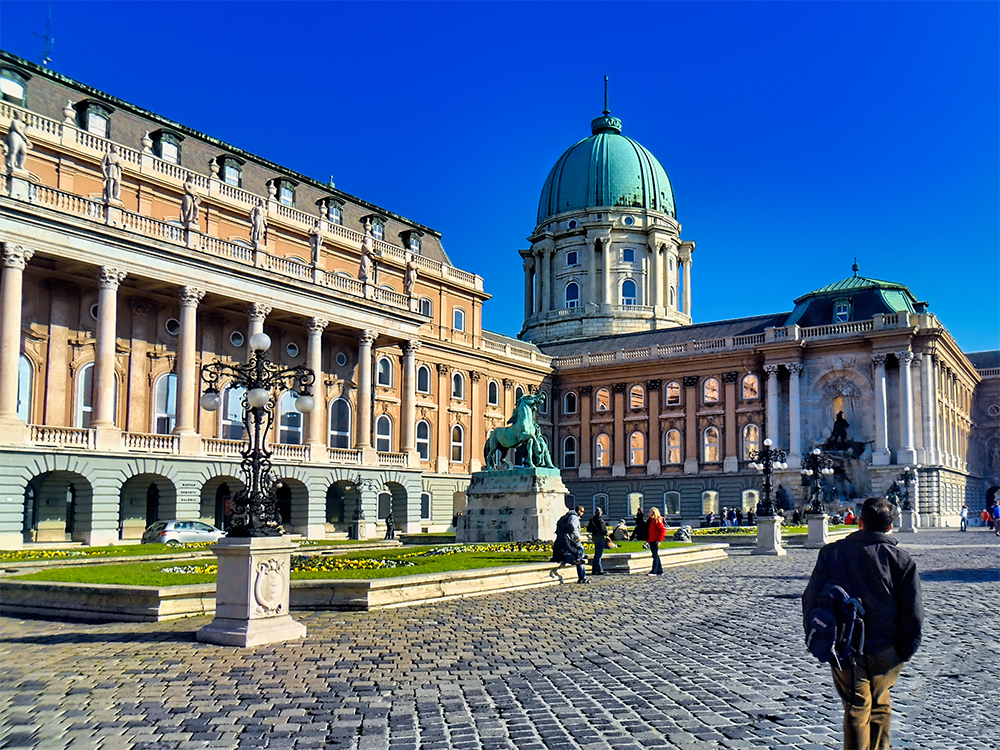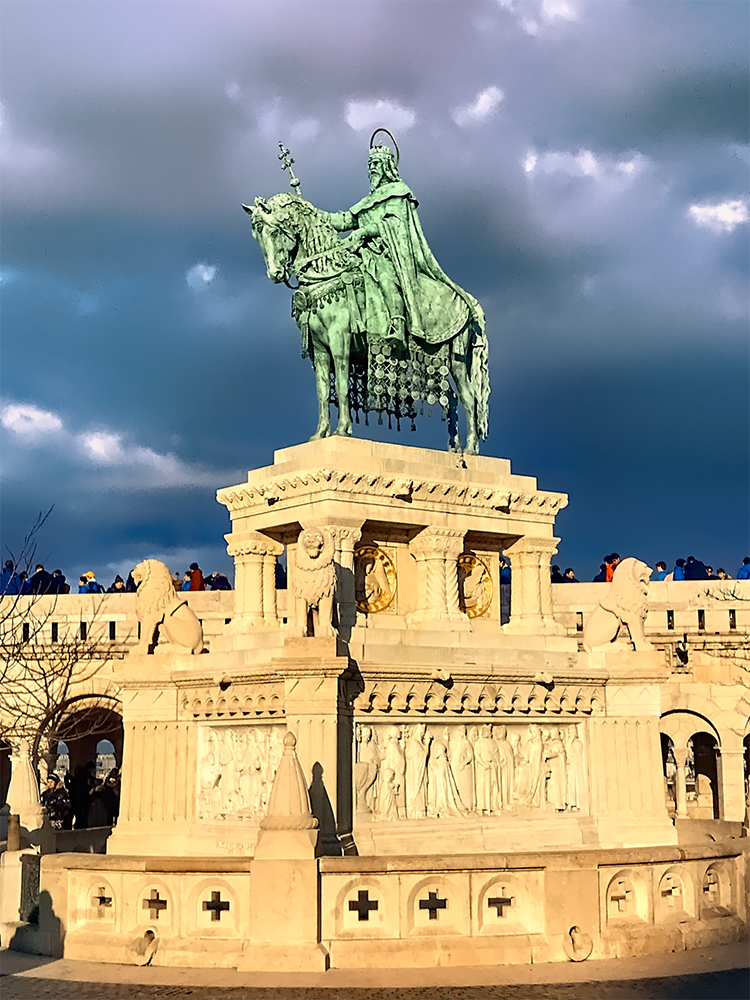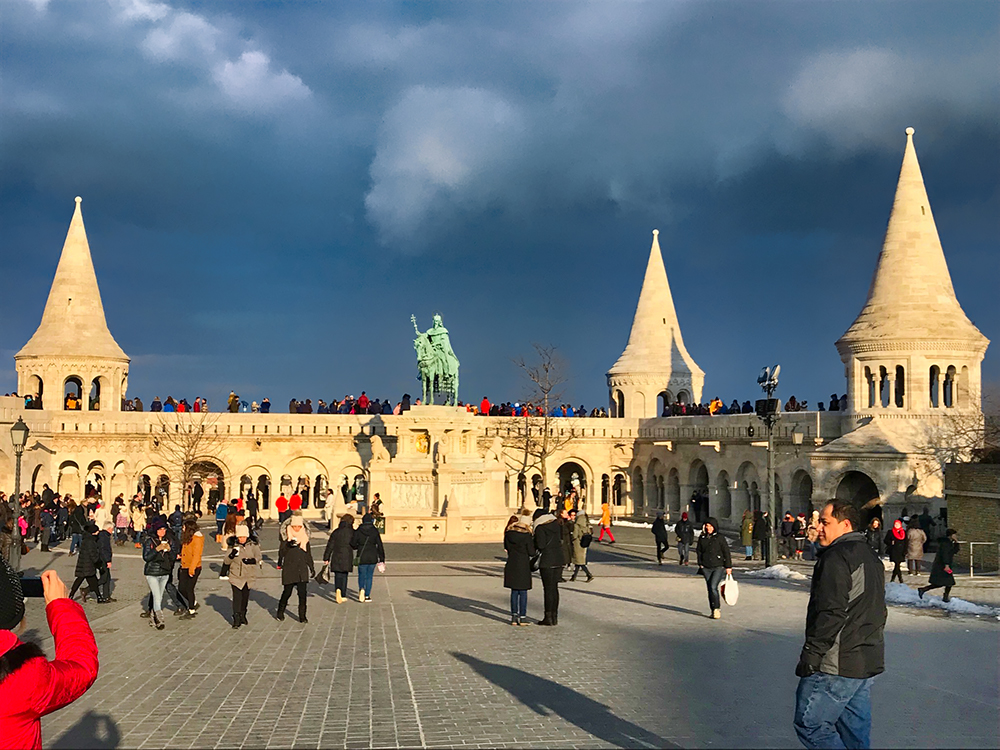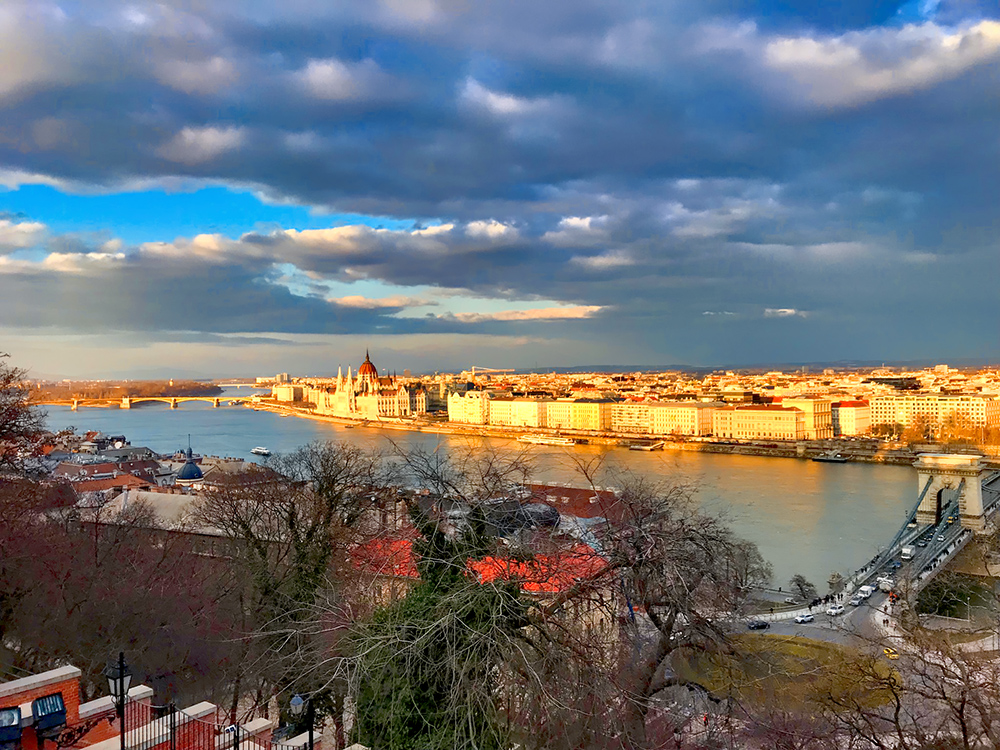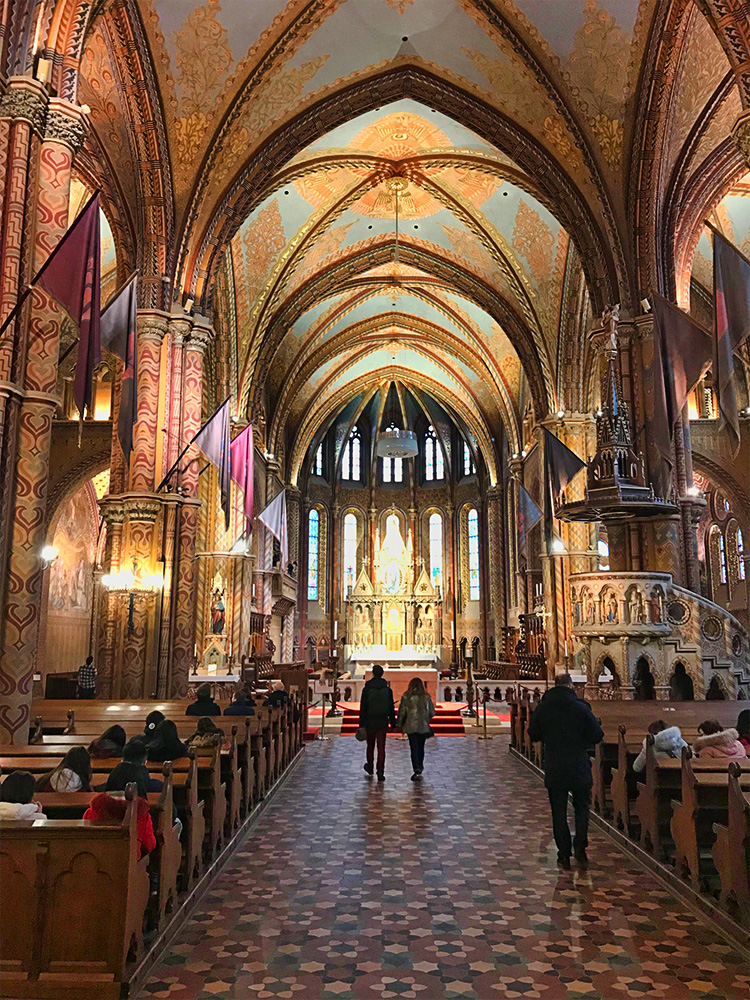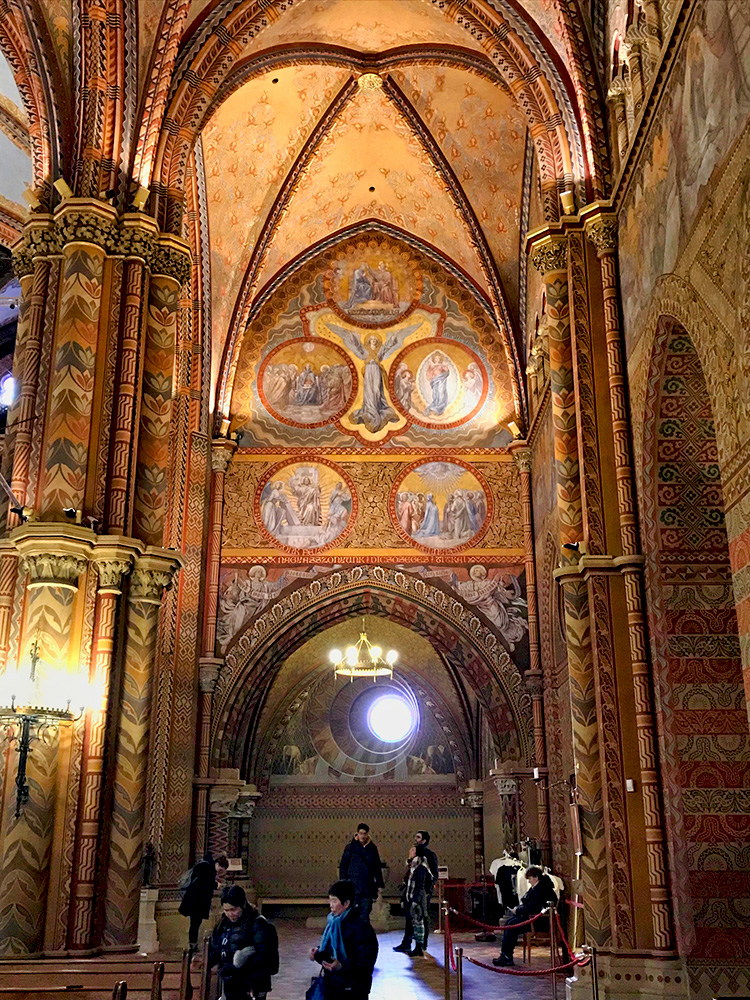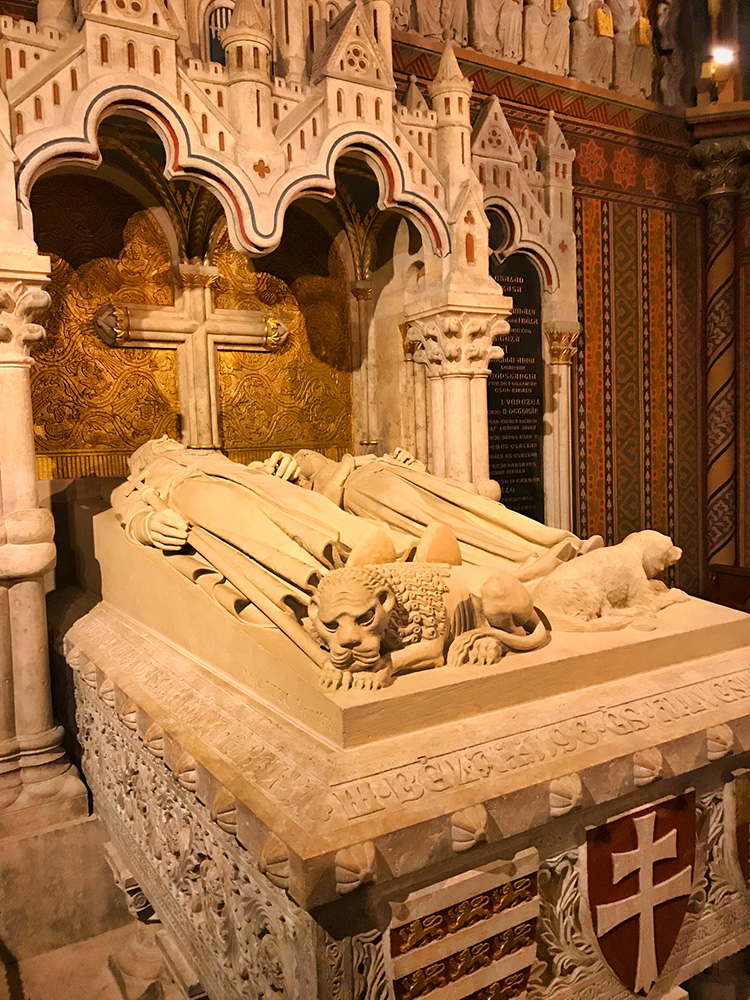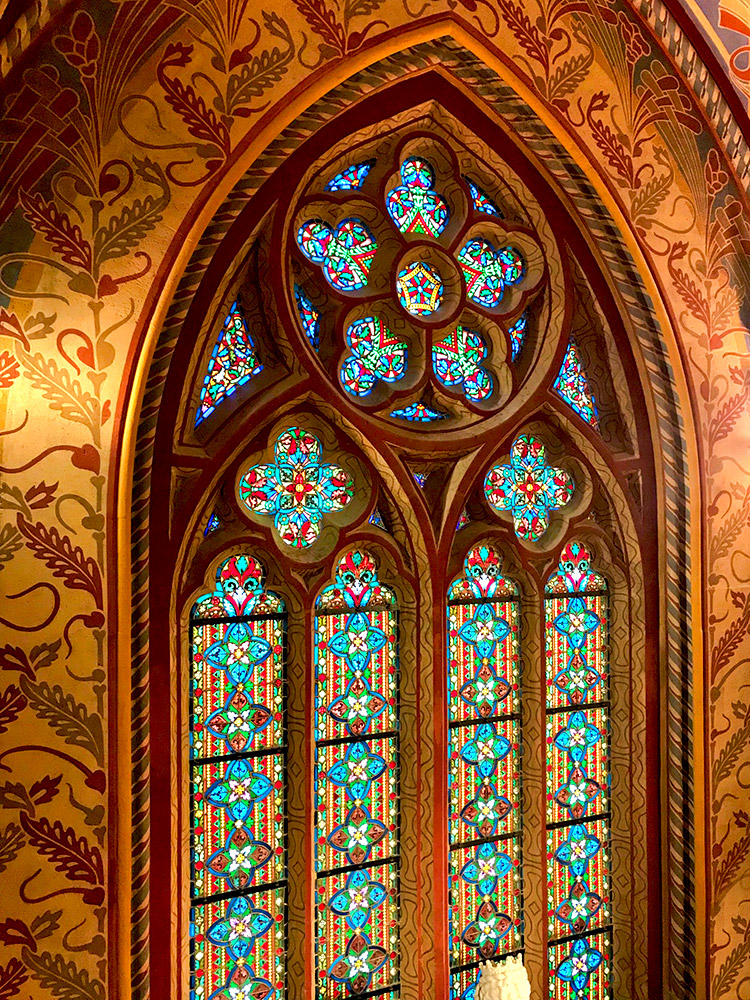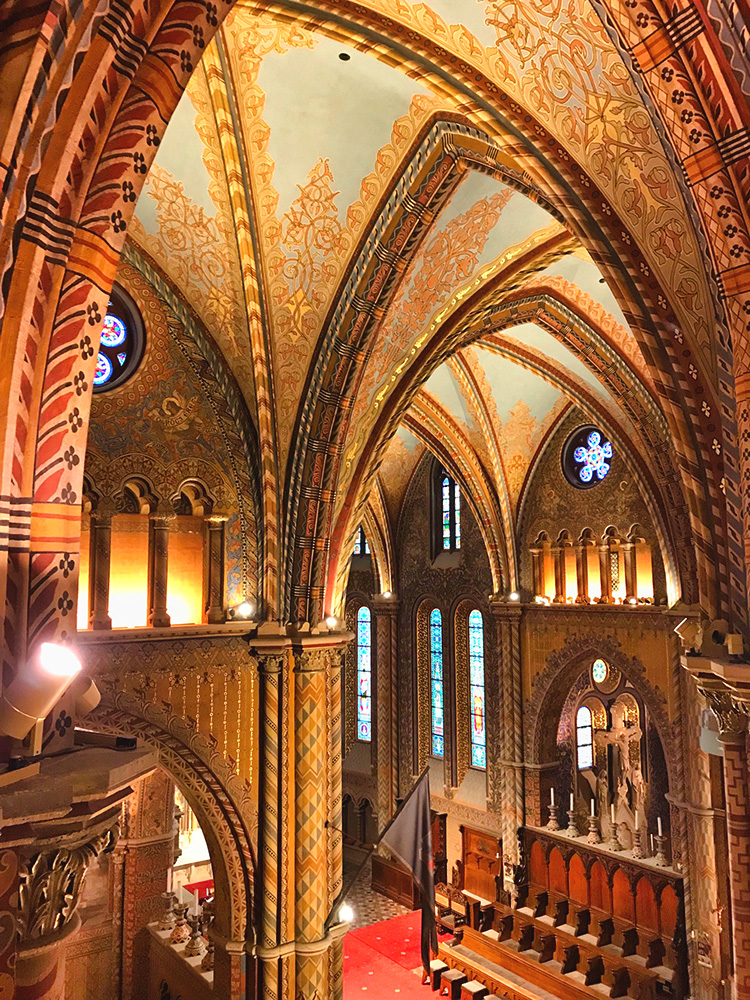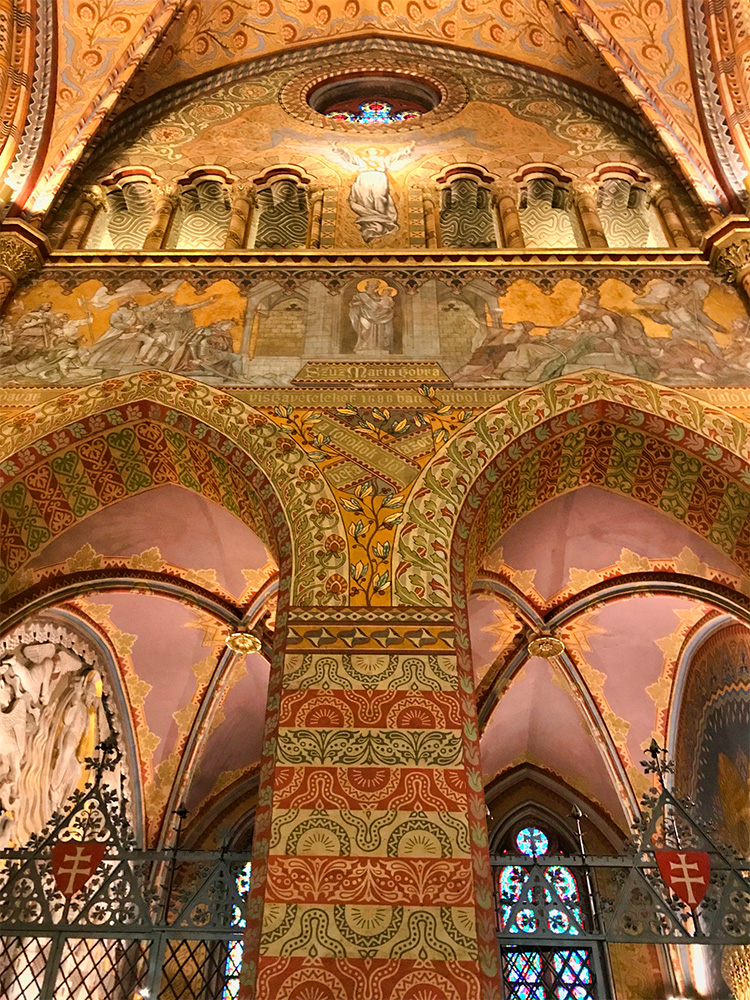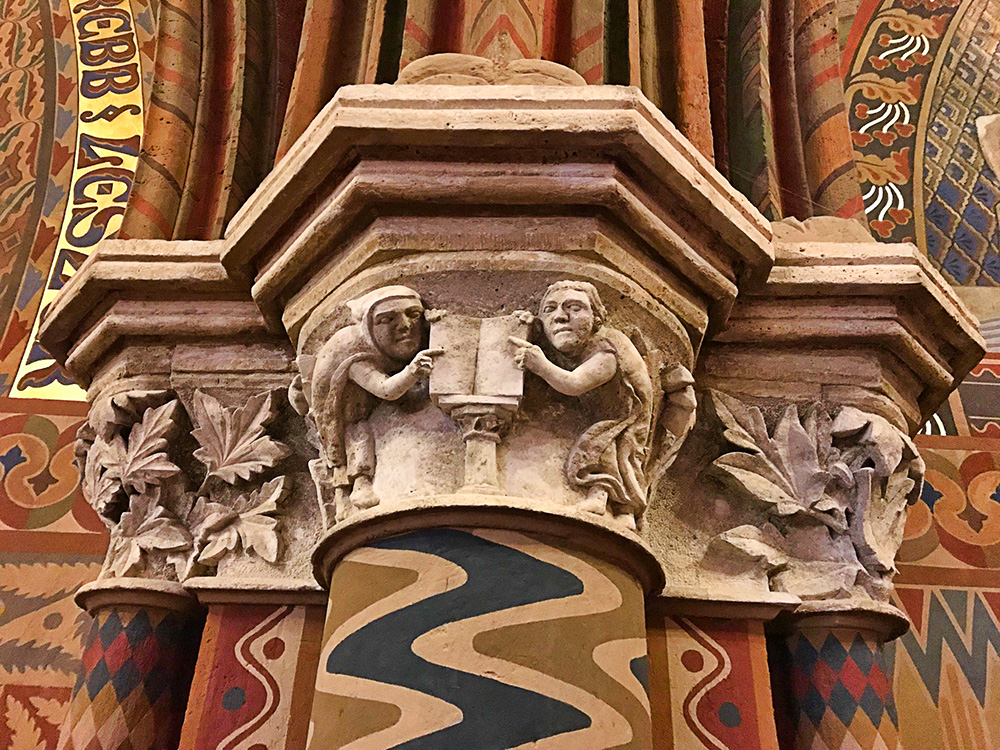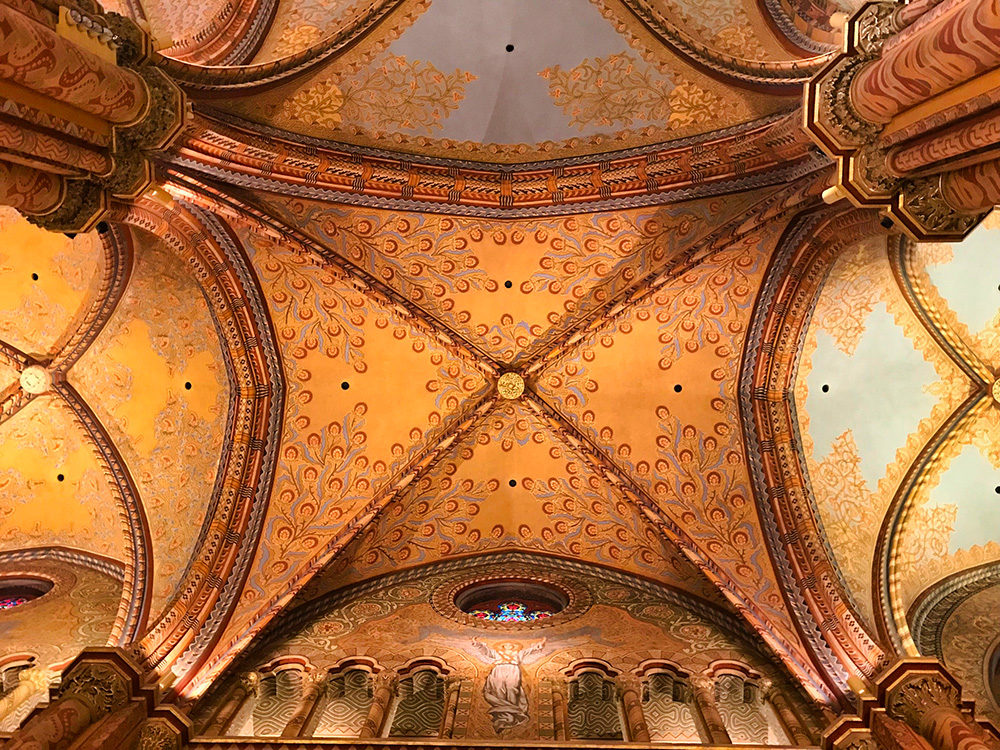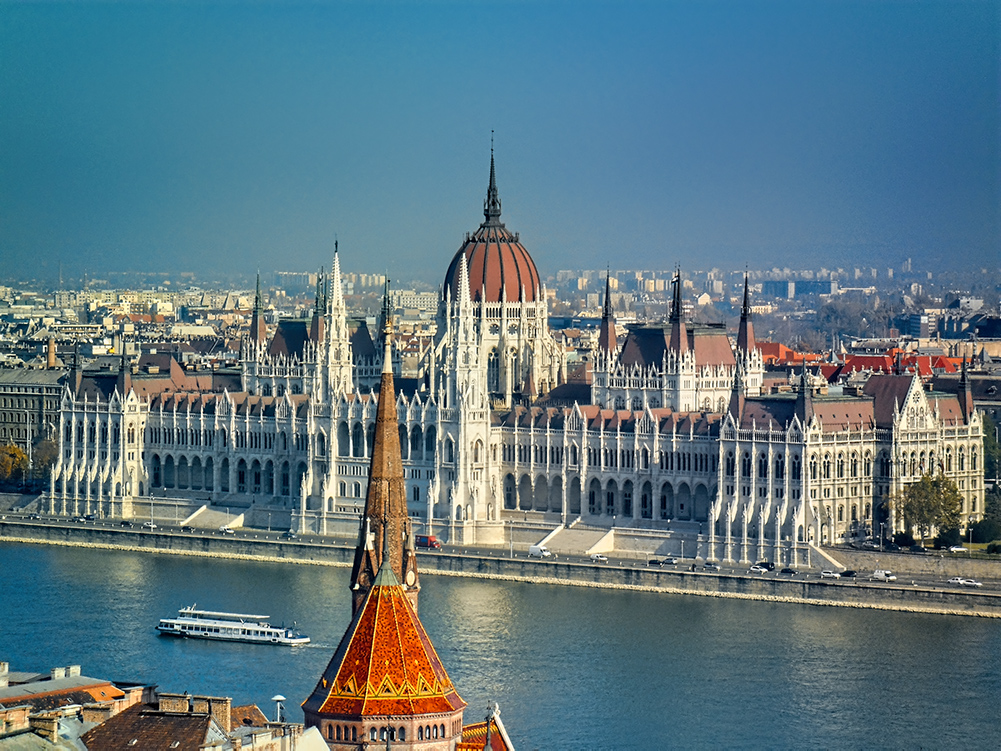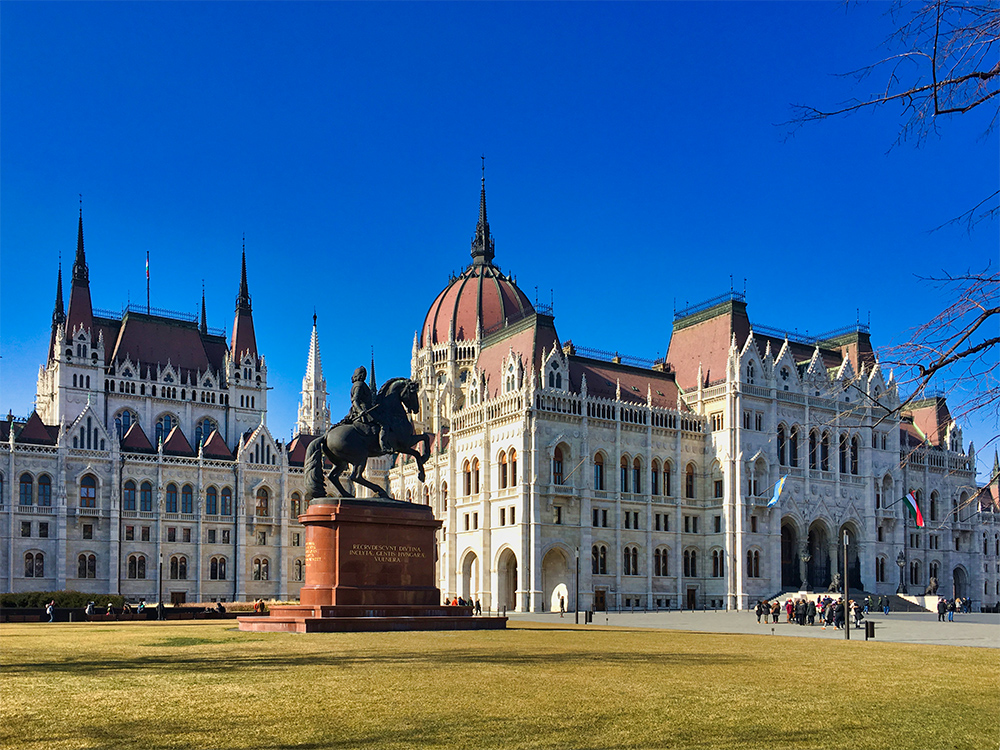Although we live in the Netherlands at the moment, we are regular visitors to Hungary. Sometimes we invite friends or colleagues with us to show them our beautiful homeland. Every time we go back, it is different in a way.
This time we traveled in February (2019), so we depended on the weather conditions. Fortunately, Jupiter, the god of the sky showed mercy to us, and we had a wonderful sunny weekend. If you do not know what to do in three days in Budapest, this itinerary will help you discover the city’s main highlights. We arrived in Budapest on Friday evening and we did not plan anything for this first night because we wanted to leave our nest Saturday early. So we just went for a walk near our accommodation to grab some food and have a welcome drink.
Our headquarter was in the Gozsdu Court aparthotel, in the very center of Budapest. The apartments in the hotel are spacious, clean, and although it is located on a street with bars, karaoke, and discos, the soundproofing is very good. Gozsdu Court is a kind of cross street with a lot of cafes, restaurants, and terraces. During the day in the court, there are cozy stalls of local (old) women who sell handcrafts, stalls with jewelry (craftwork), LPs, etc… In the evening the place turns into a party center.
Vorosmarty Square
After a hearty breakfast, we started our route through Deak Square towards Vorosmarty Square. The square is one of the most atmospheric squares in Budapest. In the summer there is plenty of liveliness through outdoor performances, while in the winter months Vörösmarty tér is the setting for the Christmas market. On the square, you will find a few terraces and bars, while all kinds of shops and restaurants are situated around the square. Below is the famous coffee house Gerbeaud, where the eponymous Swiss coffee master started in the mid-nineteenth century to serve his guests delicious coffee.
Between the baroque buildings is one striking building: a shop that is almost entirely covered in glass. This contains several clothing stores. There is also a large statue of Mihály Vörösmarty on the square. The square is named after this Hungarian poet. Vörösmarty tér is also the starting point of the car-free street Deák Ferenc utca. This street is nicknamed “Fashion Street” because of the many fashion stores that you will find here.
Because of its good location, it is an ideal starting point for a walk through the old town.
Walking towards the Central Market Hall
From the square, we walked down to the Danube promenade because our goal was to march on the promenade down till the Vasarcsarnok. On our way, we came across beautiful buildings as the Pesti Vigado and statues like the Little Princess or the girl with her dog.
The Pesti Vigadó is a cultural center from 1865. The facade is decorated with Hungarian folk motifs and statues of famous Hungarians such as King Matthias and Count Széchényi. On the pillars above the central entrance are statues of the Greek muses. The Central Market Hall is a large fresh market. You can buy here delicacies, meat, fruit, and vegetables, but also special Hungarian herbs. You can also eat here delicious and cheap.
Gellert Hill
After the Central Market Hall, we turned into the Liberty Bridge to cross the river Danube. The Liberty Bridge is one of nine Danube bridges in the Hungarian capital. It is 331 m long and 20.1 m wide and dates back to 1896.
When you cross it on foot you realize how wide the Danube is. We were marching towards the Gellert Hill and Citadel on the top of the hill. Gellert Hill is located between the Liberty Bridge and the Elisabeth Bridge on the Buda side in District I. The hill bears the name of Saint Gellért, who was martyred here. Opposite the Gellért Bath, the Rock Church hides in a recess in the wall of Gellért Hill. It was formed in 1931 as a continuation of a natural cave. The Pauline order moved to the monastery built next to it. In the Cave Chapel, the order still preserves its most important relic: a piece of the bone of St. Paul the Hermit.
Citadel
After visiting the chapel we were climbing up the hill to admire the beautiful view over Budapest. At the top of Gellért Hill is a fortress: the citadel. The fortress was originally built during the occupation of the Habsburgs. But nowadays it is a symbol of freedom. It is also a beautiful viewpoint. At the top of the hill is also the statue of liberty. This lady who watches over the freedom of Budapest can be seen standing on top of the hill from most of the city. The statue commemorates the Hungarian liberation from Nazi rule.
Széchenyi bath
After descending from the hill we went back to our apartment to grab our swimming suits and make a visit to the famous bathhouse in Budapest, the Szechenyi Bath. You may be familiar with the image of older men playing chess in the warm water here. This bathhouse is the largest in the city and one of the largest thermal baths in Europe.
The Széchenyi bath was built at the beginning of the twentieth century in a beautiful neo-Baroque style. It is an impressive and beautiful building. When you sit in the outdoor pool – which is open even when it’s freezing outside – you look at the beautiful façades of the building. But it is also good to stay indoors. You can choose from many different pools. Be aware that this bath is very popular among tourists and Hungarian too, so it can be very crowded.
Heroes Square
After soaking our tired limbs well in the healing water we headed back home through the Heroes Square. Heroes’ Square was built in honor of Hungary’s millennial anniversary. It is the largest square in Budapest. The Millenium monument in the center of the square was erected to commemorate the history of the Magyars, the seven tribes that founded Hungary. In addition to the Magyar chieftains, there are also statues of kings and other important historical figures.
Dinner
We found our well-deserved dinner in the Vak Varju restaurant. This restaurant serves authentic Hungarian food with a modern twist. Good value for your money in an excellent atmosphere. The staff was very friendly, and the food was really nice. I would highly recommend this place if you are looking for a good place to eat. We were here with the six of us, and everyone was very satisfied with their dishes. They also have a good selection of Hungarian wines and spirits.
Ferenciek Square
Sunday our route took us first to Ferenciek Square. On the way, we passed the Great Synagogue in Dohany Street. This synagogue is the largest in Europe. It is also the second-largest in the world (the largest state in New York). The synagogue is located in the Jewish quarter of Budapest. It was built in Moorish style between 1854 and 1859 to a design by the architect Ludwig Förster. He also designed the Vienna Synagogue. Two glorious Moorish domes on top of the synagogue partly determine the appearance of Pest. The facade is richly decorated with blue, yellow, and red bricks, the colors of Budapest’s coat of arms.
Just before you would reach the Elizabeth Bridge, turn to the right into Vaci street and try one of the delicious Molnár’s kürtőskalács. When you finished your chimney cake, go down to the embankment of the Danube.
We strolled down till the Chain Bridge, on the way we had a wonderful sight of the Buda side.
Szechenyi Square
Szechenyi Square got its name from István Szechenyi and is located on the Pest side, near the embankment. There are two large monumental sculptural compositions in the square, the Monument of Ferenc Deak, and The Monument of Istvan Szechenyi.
On three sides of the square, there are monumental buildings, including historic ones. The Gresham Palace was built in the early 20th century (1904-1906) in the Art Nouveau style. In the neo-Renaissance style built Hungarian Academy of Sciences is located in the Northern part of the square. The opening of the building took place in 1865.
Chain Bridge
Before the Chain Bridge was built, there was no good connection between Buda and Pest. Count István Széchenyi took the initiative for a bridge and he also partly financed it. Now you also understand why the bridge is also called the Szechenyi Chain Bridge. The official opening took place in 1849. At the time, the bridge was the first fixed bridge in Hungary and, at 202 meters in length, it was one of the longest bridges in the world.
Buda Castle
After crossing the Danube again we took the cable car to Buda Castle. The Castle was built in the 13th century after the invasion of the Mongols that destroyed a large part of Hungary. When they withdrew, King Bela IV decided to build a castle surrounded by a city. Heavy ramparts were to protect the king and the citizens against a new attack from the Mongols. For seven centuries this castle would be the home of the Hungarian royal family. It was heavily damaged several times, after which it was rebuilt and provided with new elements every time.
The Fisherman’s Bastion
The Fisherman’s Bastion was built in honor of Budapest’s Millennial Jubilee at the end of the 19th century. This beautiful vantage point is located in the Castle Quarter.
The bastion is built as a panoramic terrace with a view of the city. It was designed with the idea of evoking a romantic craving for old times. It is a popular place to go for tourists as well as the Hungarians themselves. The explanation is obvious: you have a magnificent view over the city and a very beautiful sunset can be admired.
There was a big storm hanging above our head so we decided to seek for asylum in the Matthias Church.
The Matthias Church
The Matthias Church was built between the 13th and 15th centuries. But not much remains of the original structure. Just the foundation, some of the walls, and some pillars. The church is named after King Matthias Corvinus, who ordered the construction of the highest tower of the church. This gothic masterpiece you have to visit if you have enough time for it.
The Parlament
After the heavy storm moved away we headed towards our last destination, the Hungarian Parlament.
In 1867 Hungary became a dual Monarchy. In addition to the advent of the dual monarchy, Hungary’s millennial jubilee was also imminent towards the end of the century. These two events prompted Emperor Franz Joseph to have a new parliament building built. In 1880, together with his prime minister Kálmán Tisza, he held a competition for the design of the building. It was won by Imre Steindl. His neo-Gothic design for the new Parliament building was inspired by the Houses of Parliament and Westminster Abbey in London.
The Hungarian Parlament is a symbol of the Hungarian state and is also the largest government building in Europe. Over 40 kilos of gold leaf and more than half a million semi-precious stones were used for this imposing building on the banks of the Danube.
Going to places like Budapest for the weekend is easy and there is a lot to choose from. Budapest is rich in art, culture, and shops! It is a perfect destination whatever you go for a short weekend or a longer stay.

